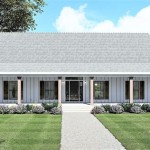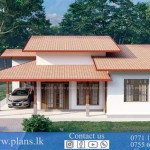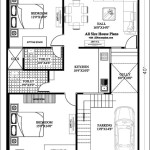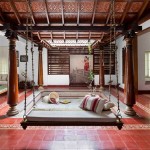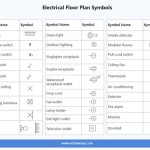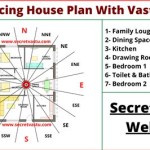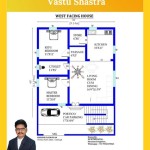Bat House Plans Printable: A Comprehensive Guide
Attracting bats to a property can provide substantial benefits, primarily through natural insect control. Many species of bats are voracious insectivores, consuming vast quantities of mosquitoes, moths, and other agricultural pests nightly. Installing a bat house encourages bats to establish residence in the area, fostering a more balanced ecosystem. Printable bat house plans serve as a valuable resource for individuals seeking to construct these structures and contribute to bat conservation.
The effectiveness of a bat house depends on several factors, including its size, design, construction materials, location, and orientation. A well-designed bat house, built according to proven specifications, significantly increases the likelihood of occupancy. Using printable bat house plans allows builders to accurately follow these specifications, ensuring optimal conditions for bats.
This article will explore the various aspects of printable bat house plans, including the importance of proper design, material selection, construction techniques, installation guidelines, and maintenance practices. By understanding these elements, individuals can successfully build and maintain bat houses that effectively attract and support bat populations.
Key Considerations for Selecting Bat House Plans
Choosing the right bat house plan is a crucial first step in the construction process. Various designs cater to different climates, bat species, and construction skill levels. Careful consideration should be given to several factors before selecting a particular plan.
Regional Bat Species: Different bat species have varying habitat preferences and roosting requirements. Some species prefer narrow crevices, while others prefer wider spaces. The selected bat house plan should be appropriate for the common bat species in the specific geographic region. Researching local bat populations and their preferred roosting conditions can inform the selection process.
Climate: Climatic conditions also play a significant role in bat house design. In colder climates, bat houses should be larger with multiple chambers to provide insulation and protect bats from extreme temperatures. Dark-colored exterior finishes can help absorb heat in cooler regions, while lighter colors are preferable in warmer climates to reflect sunlight. Proper ventilation is also essential to prevent overheating in the summer months.
Construction Skill Level: Bat house plans range in complexity, from simple single-chamber designs to more elaborate multi-chamber structures. Individuals with limited carpentry experience should opt for simpler plans that require fewer tools and less intricate construction techniques. More experienced builders can tackle more challenging plans that offer greater capacity and enhanced features.
Material Availability and Cost: The type of materials specified in a bat house plan can significantly impact the overall cost and longevity of the structure. Locally sourced, readily available materials are generally the most cost-effective and sustainable option. Pressure-treated lumber is a common choice for exterior components due to its resistance to decay and insect damage. However, it is important to ensure that the treatment is safe for bats, as some older formulations contain harmful chemicals.
Plan Features: Some bat house plans incorporate additional features, such as predator guards, landing platforms, and ventilation slots. Predator guards, typically made of sheet metal or wire mesh, prevent predators like snakes and raccoons from accessing the bat house. Landing platforms provide bats with a secure surface to land on before entering the roost. Ventilation slots allow for air circulation, helping to regulate temperature and humidity inside the bat house.
By carefully considering these factors, individuals can select a bat house plan that is well-suited to their needs and the local environment, maximizing the chances of attracting and supporting bat populations.
Essential Elements of Effective Bat House Design
Aside from selecting the appropriate plan, understanding the key design elements that contribute to a successful bat house is critical. These elements influence the internal temperature, humidity, and overall suitability of the structure for bats.
Roosting Chamber Size and Configuration: The size and configuration of the roosting chambers are paramount. Bats typically prefer narrow crevices ranging from ¾ inch to 1 inch wide. These narrow spaces provide a secure and comfortable roosting environment. The number of chambers and their arrangement can also affect occupancy rates. Multi-chamber bat houses, with varying crevice widths, can accommodate different bat species and preferences.
Interior Surface Texture: Bats require a rough surface to grip onto within the roosting chambers. Smooth surfaces offer no purchase and make it difficult for bats to cling. Untreated rough-sawn lumber is an ideal material for interior surfaces. Alternatively, exterior plywood can be scored with horizontal grooves to create a textured surface. The grooves should be approximately ¼ inch deep and spaced about ½ inch apart.
Ventilation: Proper ventilation is crucial for regulating temperature and humidity inside the bat house. Ventilation slots, typically located near the top and bottom of the structure, allow for air circulation. The size and placement of these slots should be carefully considered to prevent drafts while ensuring adequate ventilation. In warmer climates, larger ventilation slots may be necessary to prevent overheating.
Color: The exterior color of the bat house can significantly impact its internal temperature. Dark colors absorb more heat, making them suitable for cooler climates. Light colors reflect heat, making them more appropriate for warmer climates. A general guideline is to use dark colors in regions with average July high temperatures below 85°F and light colors in regions with average July high temperatures above 85°F. Medium colors are acceptable in regions with average July high temperatures between 85°F and 95°F.
Roof Overhang: A roof overhang protects the entrance of the bat house from rain and direct sunlight. The overhang should extend at least 3 inches beyond the front of the structure. This helps to keep the roosting chambers dry and prevents overheating.
Landing Area: A landing area, typically consisting of an extended bottom panel or a sheet of mesh, provides bats with a place to land before entering the roost. The landing area should be at least 6 inches wide and extend the full width of the bat house. Rough-sawn lumber or wire mesh provides a good gripping surface for bats.
By incorporating these essential design elements, builders can create bat houses that provide optimal roosting conditions for bats, increasing the likelihood of occupancy and contributing to bat conservation efforts.
Installation and Maintenance of Bat Houses
Proper installation and ongoing maintenance are crucial for ensuring the long-term success of a bat house. Even a well-designed and constructed bat house will fail to attract bats if it is not installed correctly or if it is neglected over time.
Location: The location of the bat house is a critical factor in its success. Bats prefer locations that are warm, sunny, and sheltered from wind. The bat house should be mounted at least 12 to 20 feet above the ground, ideally on a pole or the side of a building. Avoid mounting bat houses on trees, as they are more susceptible to predation and temperature fluctuations. Choose a location that receives at least 6-8 hours of direct sunlight per day.
Orientation: The orientation of the bat house can also affect its internal temperature. In cooler climates, a south- or east-facing orientation is preferable, as it allows the bat house to absorb more sunlight. In warmer climates, a north- or west-facing orientation may be more suitable to prevent overheating.
Clear Flight Path: Ensure that there is a clear flight path to the entrance of the bat house. Branches, wires, and other obstructions can deter bats from using the structure. Clear any vegetation within a 20-foot radius of the bat house entrance.
Mounting Method: Securely mount the bat house to a pole, building, or other stable structure. The mounting method should be able to withstand strong winds and prevent the bat house from swaying excessively. Use sturdy hardware and ensure that the bat house is level.
Maintenance: Regular maintenance is essential for keeping the bat house in good condition and preventing problems. Inspect the bat house annually for damage, such as cracks, leaks, or loose hardware. Repair any damage promptly to prevent further deterioration.
Cleaning: Over time, bat guano can accumulate inside the bat house. While guano is a valuable fertilizer, excessive buildup can reduce the amount of roosting space and create unsanitary conditions. Clean out the bat house every few years, ideally in late winter or early spring before bats return from hibernation. Wear protective clothing, including a mask and gloves, when cleaning a bat house.
Pest Control: Periodically check the bat house for pests, such as wasps, spiders, and mites. Remove any nests or webs promptly to prevent them from interfering with bat occupancy. Avoid using pesticides inside the bat house, as they can be harmful to bats.
By following these installation and maintenance guidelines, individuals can maximize the chances of attracting and supporting bat populations in their area. A properly installed and maintained bat house can provide a valuable roosting habitat for bats for many years to come, contributing to the conservation of these important animals and benefiting the local ecosystem.

Bat House Plans Florida Bright Idea 17 Diy Free Bluebird

Bat House Plans Bird
Bat House Plan

Bat House Plans Houses

Bat Houses Mass Gov

20 Diy Bat House Plans Insteading
Building A Bat House

Bat House Complete Detailed Diy Plans Only

Simple Bat House Plans Myoutdoorplans

Bat Guys Free Suburban House Plans

